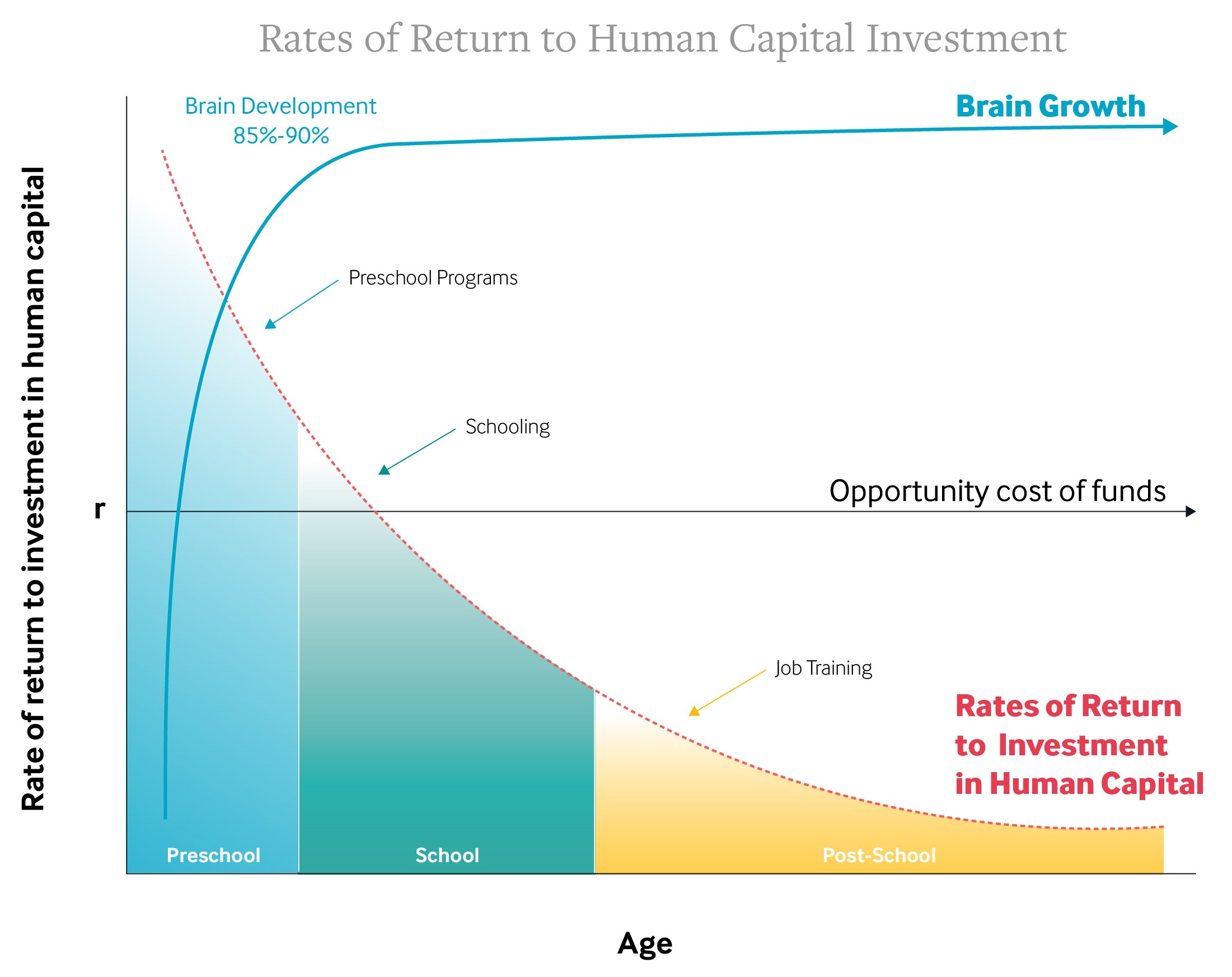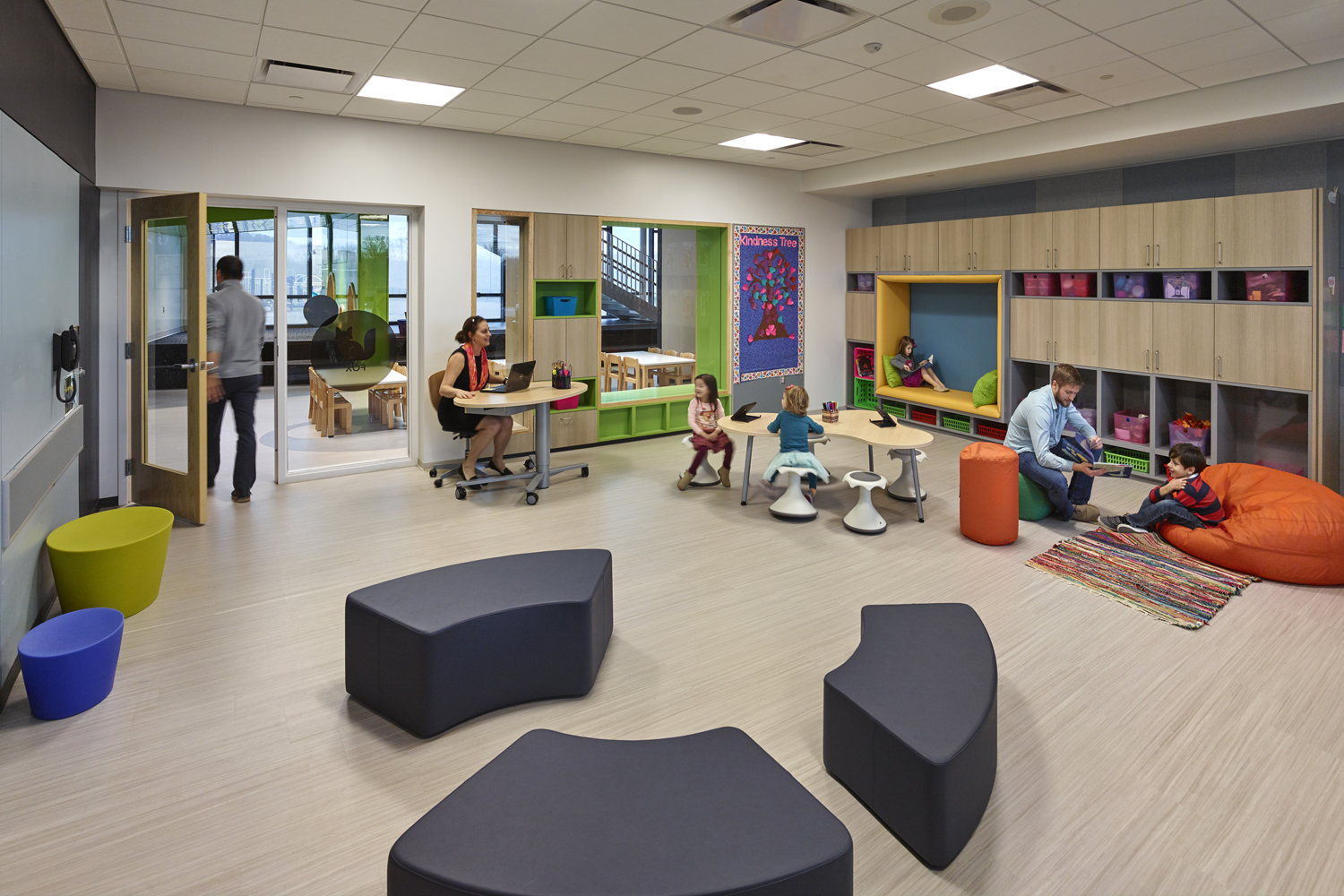“America’s continuing efforts to improve education and develop a world-class workforce will be hampered without a commitment to early childhood education.”
– The Business Roundtable
The connection between learning and doing – key aspects of both our daily architecture practice and our bigger hopes for successful learning outcomes in the schools we design – is a vital educational method as old as civilization itself. In our quest as architects (and, for that matter as parents, neighbors, volunteers, and educators ourselves), many at VMDO are fascinated by the numerous ways that the classrooms, schools, and learning spaces that we design are part of a larger investment in children and their communities. An increasing number of economic, scientific, and sociological research supports what we’ve believed for decades – that early childhood development, including well designed facilities, classrooms, and learning environments are crucial investments that can pay big dividends beyond just the school system.

The return on investment of early childhood learning and high-quality learning environments, for both families and our wider society, seems obvious. While 85-90% of brain growth happens before children reach school age, we spend less than 11% of our education dollars on children before kindergarten. Despite wide bipartisan support for publicly funded early childhood programs (multiple surveys found upwards of 88% of those polled agree) most states legislatures have not prioritized the issue. Decades of research from the US and around the world make a compelling case for broader, more accessible publicly funded preschool programs. This evidence is also reinforced by economic evaluations that quantify both the positive economic returns to society and the wide range of positive educational outcomes. Improving access and quality of early childhood development and early learning environments would make it one of the nation’s most profitable social investments.
Research Round-Up: examples from a diverse array of fields on the positive social impact of early childhood education include:
- Broad Social and Individual Returns: Professor James Heckman, a Nobel Laureate and leading economics researcher, recently concluded a 40-year study that shows that every $1 spent on early childhood programs distributes a 13% per year return on investment. The positive returns include long-term cost savings due to better outcomes in public health, social behaviors, educational attainment, employment opportunities, and income potential.
- College Graduation Rates: The conditions and environments of the first four to five years of childhood significantly influence long-term educational outcomes and have enduring, lifelong effects. Researchers found that holistic school readiness, which incorporates self-regulation, pre-academic knowledge scores, and attention span-persistence (at age 4) were strong indicators for college graduation by age 25.
- Reduction in Poverty: Estimates from different studies show a range of benefits, but overall early childhood programs generate benefits of as much as $8 to $17 for every $1 in cost. Some of the benefits include higher graduation rates, less crime, and greater economic productivity, as well as reducing poverty rates in the US by 5-15% percent of current levels (or 1-2 percentage points overall).
- Benefits for Mothers/Parents: Comprehensive early childhood programs, especially with high-quality wraparound day care, have been shown to benefit maternal well-being and mental health, and also increase the economic prospects for mothers and children (in the long-term.) As a critical component to upward mobility, accessible childcare generates labor force participation, family stability, and increases parental income while children gained wide-ranging pre-academic skills to make them more productive in the future workplace.
- Increased Saving for Families: If comprehensive preschool was publicly supported, then families would have significant savings and the option to allocate income to other important needs. According to reports from Child Care Aware America, the “unaffordability” of child care is one of the most significant expenses in a family budget, often exceeding the costs of housing, food, transportation, and even college tuition. Average day care costs now exceed college tuition in 29 states. In Virginia, the average cost of child care is $22,360 per year, one of the most expensive states in the nation. Our friends in D.C. pay nearly twice as much – childcare expenses in the nation’s capital is on average $41,291 per year.
- Economic Benefits and Property Values: The national nonprofit, nonpartisan organization, the Committee for Economic Development, has argued that high quality early childhood programs leads to higher graduation rates and more stable, skilled workers, which “magnetizes investments and jobs in the local economy, increasing local earnings.” Additionally, high achieving schools draw and retain high achieving families, thus helping increase property values in a community.
- Reducing “Gaps” and Systemic Disparities: The “school readiness deficit” for pre-k children is a well-established precursor for many academic, social, financial, and health related systemic disparities. Social and environmental conditions, especially socio-economic disadvantages, have exacerbated negative outcomes for low-income children which include the growing achievement gap and subsequent income gap in American society. Without greater governmental support, low-income children will continue to be trapped in a long-term cycle of disparities in educational attainment, employment, and earnings. Thus, numerous policy analysts and experts urge that the early origins of educational and economic inequality – the school readiness deficit – should be more directly addressed with increased resources (funding, policy, and even the courts). Studies show that supporting high-quality early learning environments and programs is a critical strategy in reducing many growing gaps in society.
There is substantial evidence about the broad social benefits and return on investment associated with Early Childhood Learning and high-quality learning environments. The classrooms, schools, and learning spaces that we design are part of this larger investment in children and their communities. Policy makers and leaders need to take more substantial steps toward supporting more universal, higher-quality learning environments and facilities for ALL early learners. It would be one of the nation’s most profitable social investments.

